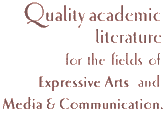Jean-Luc Nancy
Forbidden Representation
Despite its rather poor formulation, one proposition concerning the representation of the camps or of the Shoah continues to circulate within the sphere of public opinion with a certain degree of insistence: either one is incapable of representing the extermination or one is not allowed to do so. Either it is impossible or forbidden or, it is impossible and in any case, forbidden (or forbidden and in any case, impossible). In its very indecision on these matters, the proposition is already confused. The confusion becomes even more difficult when the attempt is often hastily made to establish the semblance of a comparison with what is called the Biblical prohibition of representation. (Here is not the place to go looking for the written traces of these propositions. Suffice it to recall the ways in which they circulated especially amid the controversy that surrounded the release of Spielberg�s Schindler�s List and even more especially, in what opposed this film to Lanzmann�s Shoah. We could recall many other episodes besides, ones involving other films or works of art.)
The discourse that rejects the representation of the camps is confused because its content does not allow it to be clearly circumscribed and because its motives are even less clearly determinable (to say nothing of the fact that in addition, the discourse often gets enveloped in a sacred aura, a point to which we will return later).
Is it, finally, a question of impossibility or is it one of illegitimacy? If it is a question of impossibility, so long as we disregard the question of technical difficulties, to what does this impossibility point? Does it have something to do with the unbearable nature of what is to be represented? Though, we are not made indignant by the David Ol�re painting that represents the deportees in the gas chambers under the first blasts of Zyklon B1. (Even if one says that David Ol�re is a survivor in order to recognize in him a right that we do not possess, that still does not touch the painting itself. Neither does it touch the point of knowing what this �right� would be, nor the point of knowing to what extent the painter who survived is exactly the same as the deportee.) Although quite a different case, the horrors of war depicted in Goya�s engravings do not make us indignant either and neither do the horrible scenes of death and dying that take place in so many films2. As well, whatever the ordeal of reading it might be, we do not condemn the scene in D. M. Thomas� White Hotel, written from the point of view of a woman who, after narrowly escaping a firing-squad execution, finds herself still alive on top of piles of corpses in a mass grave3. (In a slightly different but highly suggestive register I think we could also say this: the question lies in whatever distinguishes the never-contested possibility of the countless representations of the dead and dying especially in W.W. I monuments but also in those of W.W. II�including those dedicated to resistance-fighters�from the sudden emergence of problems and debates regarding the camps which, finally, have nothing whatsoever to do with war4. )
If, alternatively, it is a question of illegitimacy, one can only be referring to a religious forbidding that is invoked out of context and without any justification for this displacement. At the same time, what results is a slippage of the forbidding�one that is usually evoked as it pertains to God�onto the exterminated Jews, then onto other victims. This slippage ought to be interrogated, not in terms of the illegitimacy of the reversal that it effects from God to the creature and then from the believer to the non-believer, but precisely because justification for a reversal of this kind can be secured through an analysis of what precisely is meant by �forbidden,� as well as what is meant by �representation.�
A clarification is thus necessary in order to be able to think rigorously the question so often expressed as the �representation of the Shoah.� In order to commence I shall sketch it out in a very simple way here, beginning with the minimal formulation of three arguments…
1 Cf. David Ol�re � A Painter in the Sonderkommando at Auschwitz. New York, The Beate Klarsfeld Foundation, 1989.
2 For example, Saving Private Ryan, another Spielberg film.
3 D.M. Thomas, The White Hotel. Harmondsworth: Penguin Books, 1981.
4 Incidentally it could very well be the case that with the camps, �war� came to an end in the sense that it could simply no longer have the same meaning that it had had previously (or only in quite a difficult way).
Read the rest of this article! POIESIS VI can be yours for $29.95 Cdn or $22.95 US, plus shipping. Click here to order. Back issues of POIESIS are also available.
order details ...

